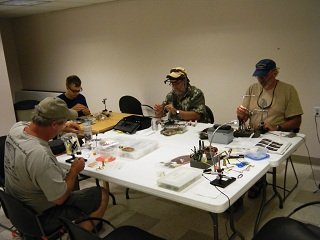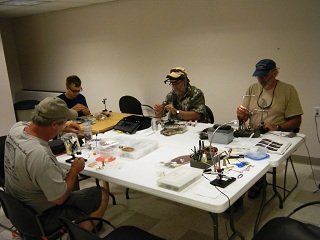 Fly tying—a meticulous and highly involved activity—offers its enthusiasts a chance to test their skills and creativity in creating delicately crafted imitations of the forage that fish feed upon during a given season. There are times, however, when individuals become frustrated with their tying abilities. Not seeing improvement or hitting a wall can happen and I outlined a few ways on how to get through it the other day. Today, we continue with a few more tips on how to improve your fly tying that will have your skills finely honed in no time.
Fly tying—a meticulous and highly involved activity—offers its enthusiasts a chance to test their skills and creativity in creating delicately crafted imitations of the forage that fish feed upon during a given season. There are times, however, when individuals become frustrated with their tying abilities. Not seeing improvement or hitting a wall can happen and I outlined a few ways on how to get through it the other day. Today, we continue with a few more tips on how to improve your fly tying that will have your skills finely honed in no time.
Flies are small and the individual strands of hackle or thread can be difficult to see. For this reason, using proper lighting and a bold background surface—such as a white or black piece of paper, depending on the fly—at your station will boost the contrast and allow you to see the intricate details of your work more easily. This will also help you notice, and fix, problems as they happen, not after the fact. No one wants to finish tying only to notice that a tail is too long, so correcting mistakes along the way is the best way to ensure a finely polished fly at the end.
Where beginners can make novice mistakes, it can be easy for pros to become a little lazy or rushed in their fly tying. Taking shortcuts can lead to messy flies, so treat each step as an equally important part of the entire process. Fly tying isn’t a race, so it’s best to take thirty minutes to create a quality fly than make several sloppy ones in the same amount of time. Eventually, as you improve, you’ll learn tricks here and there that enable faster tying, but beginners will definitely want to focus more on the quality of their flies.
Just because you’ve taken a fly off the vise, it doesn’t necessarily mean that it’s finished. Each fly will undoubtedly require a little bit of trimming once it’s completed, so inspect your fly and make any snips and clips where they’re needed. Once you’re done, try to see where you can improve the next time you tie the same fly or a similar one. We grow in our skills by taking note of our mistakes and doing what’s needed to correct them as we continue. You won’t know how to make the next fly better if you don’t take the time and self-honesty to admit what was wrong with the one before it.
Take some time to observe the insects and forage you’ll be recreating, as well. Look for creative ways to improve your flies and don’t be afraid to experiment now and then. Like I said, fly tying rewards creativity and really is an art form, so allow yourself some creative room to breathe. Also, there are fly tying clubs all throughout the country, as well as books and movies from the best in the world, so there’s always room to learn from others and share ideas and tips. Lastly, the key to improving, in anything you do, is to practice. Set aside some time to tie a fly each day and your skills will become second nature in no time at all. I hope the tips I’ve listed over the last few days have helped and I wish you all the best in your fly tying!








